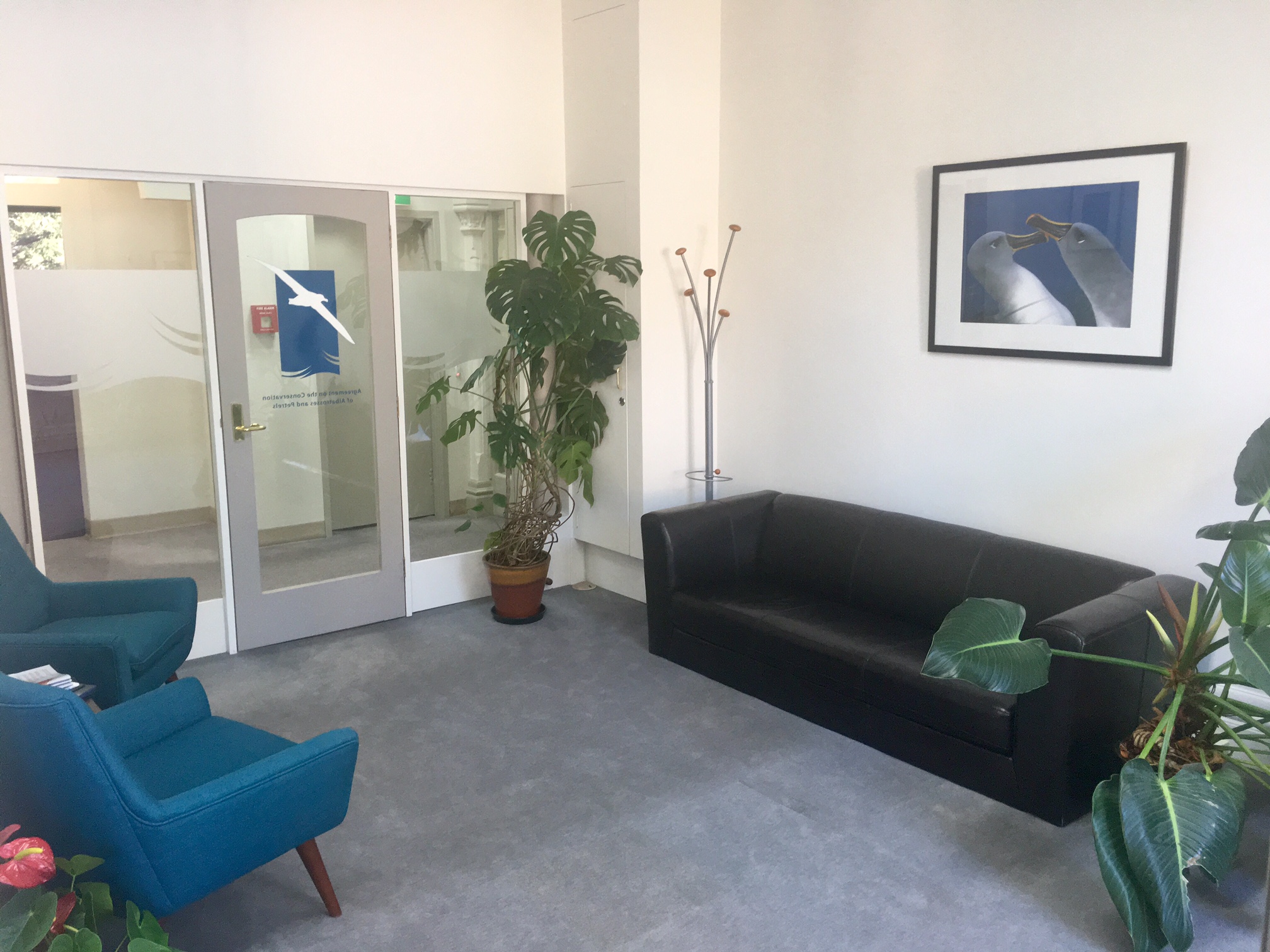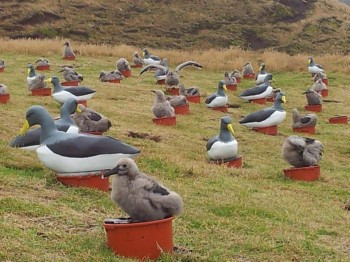Applications are invited for the post of Executive Secretary in the Secretariat to the Agreement on the Conservation of Albatrosses and Petrels (ACAP). ACAP has a small Secretariat consisting of an Executive Secretary, a Science Officer and an Information Officer, based in Hobart. Tasmania. Since ACAP's inception there have been only two Executive Secretaries, the incumbent, Marco Favero, taking over from the first, Warren Papworth in February 2016, after Warren had been in the role for six years. ACAP is now searching for its third Executive Secretary to pick up the reins from 1 December 2018.

Nice place to work: entrance to the ACAP Secretariat's office suite in Hobart, Tasmania, Australia
The Executive Secretary will be appointed in accordance with the terms and conditions determined by the Agreement’s Staff Regulations. Appointment will be for a term of four years, commencing on 1 December 2018, and subject to a satisfactory performance evaluation at the end of the first year of employment. The successful applicant shall be eligible for reappointment for one additional term, with the total length of employment not exceeding eight years. A remuneration package will include a salary in a range that, at present, commences at AUD 148 869. Allowances including superannuation (pension programme) will be provided to the successful applicant.
Applications are invited from persons meeting the following criteria:
Essential criteria
Must be a national of an ACAP Party
2. Experience or detailed knowledge of the operations of international intergovernmental organisations.
3. Representational and promotional skills.
4. Fluency in one of the ACAP official languages (English, French or Spanish).
5. Demonstration of an appropriate level of managerial experience and proven competence, including: (a) the preparation of financial budgets and the management of expenditures, and (b) the organisation of meetings and provision of Secretariat support for high-level committees.
Desirable criteria
6. Familiarity with the conservation of albatrosses and petrels.
7. Relevant experience and qualifications.
8. Proficiency in the ACAP languages.
Applications should be emailed to the Executive Secretary, Dr Marco Favero (This email address is being protected from spambots. You need JavaScript enabled to view it.) by close of business 29 April 2018 (UTC+10). Applicants are requested to complete a personal information form and to provide a statement (maximum 1500 words) in support of their application addressing the above selection criteria.
All applications will be screened by the ACAP Recruitment Sub-committee and those successful at the initial screening will be invited to complete a full application (indicative date, 5 June 2018). These will be reviewed and follow-up interviews by telephone may occur. A final shortlist of two candidates will be invited to attend a face-to-face interview with the Recruitment Sub-committee.
John Cooper, ACAP Information Officer, 29 March 2018


 English
English  Français
Français  Español
Español 



